
Tennis elbow, clinically known as lateral epicondylitis, is more than just a nagging pain on the outer part of your elbow—it’s a condition that can profoundly disrupt daily life, from simple tasks like gripping a coffee cup to more integral activities like working or playing sports. Typically caused by repetitive strain and overuse of the forearm muscles, this condition manifests as inflammation and micro-tearing of the tendons attaching at the elbow, leading to persistent discomfort and functional limitations.
In recent years, acupuncture has gained recognition as a natural and effective treatment option, supported by both traditional practice and modern scientific research. It provides a distinctive healing pathway that extends beyond merely masking symptoms, targeting the underlying energetic and physiological imbalances that contribute to the development and persistence of tennis elbow.
Tennis elbow, clinically known as lateral epicondylitis, is more than just a nagging pain on the outer part of your elbow—it’s a condition that can profoundly disrupt daily life, from simple tasks like gripping a coffee cup to more integral activities like working or playing sports. Typically caused by repetitive strain and overuse of the forearm muscles, this condition manifests as inflammation and micro-tearing of the tendons attaching at the elbow, leading to persistent discomfort and functional limitations.
In recent years, acupuncture has gained recognition as a natural and effective treatment option, supported by both traditional practice and modern scientific research. It provides a distinctive healing pathway that extends beyond merely masking symptoms, targeting the underlying energetic and physiological imbalances that contribute to the development and persistence of tennis elbow.
Tennis elbow defines itself as inflammation and micro-injury of the tendons connecting the forearm muscles to the lateral epicondyle, the bony bump on the outside of the elbow. Though famously linked to tennis players due to the repetitive arm motions involved, this condition affects a wide spectrum of individuals—manual laborers, office workers, artists, and anyone engaged in repetitive wrist or arm activities.
The root causes of tennis elbow are often repetitive strain and overuse, resulting in micro-tears in the extensor carpi radialis brevis (ECRB) tendon. This initiates a cascade of physical changes that contribute to the discomfort and impairments experienced. Key factors include:
Traditional management generally focuses on symptomatic relief through:
While effective for some, these approaches sometimes offer only temporary relief or incomplete healing, prompting patients to seek complementary therapies that promote holistic recovery.
Acupuncture, a core practice in Traditional Chinese Medicine (TCM), views tennis elbow pain as a disruption of the body’s vital energy, or Qi, along the Large Intestine, San Jiao, and Small Intestine meridians that run through the lateral arm and elbow. By targeting these meridians, acupuncture restores energy flow, addressing pain at its source.
Using fine needles inserted into specific acupoints, acupuncture stimulates the nervous system and triggers biochemical responses that reduce pain and inflammation. This combination of ancient wisdom and modern science helps not only to alleviate symptoms but also to promote the body’s natural healing and tissue repair, supporting long-term recovery from tennis elbow.
Clinical research increasingly supports acupuncture’s efficacy for tennis elbow. Studies report significant pain reduction, improved function, and enhanced quality of life as compared to sham acupuncture, medications, or placebo treatments. Key findings include:
These outcomes highlight acupuncture’s potential as a viable primary or complementary treatment modality.
Understanding which meridians influence tennis elbow guides targeted therapy:
By harmonizing these meridians, acupuncture brings both local and systemic relief.
Treatment typically involves a combination of the following points, chosen to soothe pain, improve circulation, and restore tendon health:
Besides standard acupoints, Ashi points—tender or reactive spots localized to the injury site—play a fundamental role. These points often occur in affected muscles such as:
Needling these Ashi points elicits a local twitch response signaling the release of muscle tightness and trigger points, which are crucial for symptom improvement.
When combined with physical therapy, acupuncture helps reduce muscle tension and alleviate pain, creating a more comfortable environment for patients to engage in rehabilitation exercises. This combination enhances flexibility and muscle function, allowing for more effective and consistent therapeutic movement. Ultimately, it supports faster tissue repair and a quicker return to daily activities.
While bracing, kinesiology tape (KT tape), and ice therapy offer crucial mechanical support and inflammation reduction, acupuncture addresses the biochemical and energetic imbalances underlying tennis elbow pain. Together, these treatments create a comprehensive healing strategy that targets both symptoms and root causes. This multi-modal approach optimizes recovery by stabilizing the joint and enhancing tissue healing.
For patients undergoing surgery for tennis elbow, acupuncture serves as an effective adjunct to manage preoperative anxiety and postoperative pain. It helps reduce swelling and speeds up tissue regeneration, contributing to smoother recovery and improved surgical outcomes. This supportive care can lessen the need for pain medication during the healing process.
Electroacupuncture, which applies gentle electrical stimulation through acupuncture needles, intensifies the muscle relaxation and analgesic effects of traditional acupuncture. This method enhances cellular metabolism and promotes regeneration at the injury site, accelerating tissue repair. It is especially beneficial for chronic or severe cases where stronger therapeutic intervention is needed.
The therapeutic effects of acupuncture arise from multiple interwoven mechanisms:
We believe acupuncture represents a uniquely holistic, patient-centered approach that treats more than just symptoms. With gentle, individualized care, it safely reduces inflammation, eases pain, and actively promotes natural healing without relying on medications or invasive procedures. The personalized nature of acupuncture allows us to adapt treatments to your specific health needs and lifestyle, ensuring the best possible outcomes.
At ACA Acupuncture & Wellness, embracing both ancient wisdom and modern science, we are committed to supporting your journey from discomfort to restored vitality. Choosing acupuncture is choosing a path of effective relief, deeper healing, and renewed hope.
Sources:
Zhou, Y., Chen, C., Yang, Y., Yu, H., & Yang, Z. (2021). Acupuncture therapy for tennis elbow. Medicine, 100(5), e24402. https://doi.org/10.1097/md.0000000000024402
Zhou, Y., Guo, Y., Zhou, R., Wu, P., Liang, F., & Yang, Z. (2020). Effectiveness of Acupuncture for Lateral Epicondylitis: A Systematic Review and Meta-Analysis of Randomized Controlled Trials. Pain Research and Management, 2020, 1–10. https://doi.org/10.1155/2020/8506591
Most patients begin to experience meaningful relief after about 6 to 9 acupuncture sessions, typically spread over 2 to 4 weeks. Each treatment usually lasts around 30 to 35 minutes, with sessions occurring 2 to 3 times per week for optimal effectiveness. However, the exact number of sessions depends on individual factors like the severity of the condition and the patient’s response to treatment.
A comprehensive approach that includes rest, ergonomic adjustments, and integrative therapies such as acupuncture tends to offer the fastest and most sustainable recovery. While quick fixes like medications might temporarily reduce pain, they often don’t address the root cause or promote lasting healing. Combining therapies that reduce inflammation and restore tendon function brings the best long-term results.
Key acupuncture points commonly used for tennis elbow include LI10 (Shousanli) and LI11 (Quchi), which are located near the elbow and directly influence the affected area. LI4 (Hegu), found on the hand, complements these points by regulating the flow of Qi and enhancing pain relief. Together, these points form a powerful triad for reducing inflammation and promoting tissue repair.
Acupuncture and dry needling both involve inserting needles but differ in philosophy and technique. Acupuncture follows a holistic Traditional Chinese Medicine approach aimed at restoring energetic balance and overall health, while dry needling targets trigger points primarily to relieve muscular pain. Choosing the best option depends on personal preference and clinical evaluation of what will suit your body’s needs.
Acupuncture has been shown to significantly reduce pain, decrease inflammation, and accelerate tissue healing in many cases of tennis elbow. Although individual responses vary, many patients regain function and return to activity after a course of treatment. While acupuncture may not “cure” every case, it is a valuable tool in managing and often substantially improving symptoms.
Gentle massage around the affected forearm muscles can help improve circulation and relieve tension, supporting the healing process. However, caution is necessary to avoid aggravating the injury, especially in the acute inflammatory stage. It’s best to consult a professional to ensure that massage techniques are appropriate and applied safely.
LOCATIONS
MANHATTAN
QUEENS
NEW JERSEY
CALIFORNIA

The over $4 billion US acupuncture market offers a great opportunity with over 10% annual growth rates and a continuing flow of new patients interested in the benefits of acupuncture.